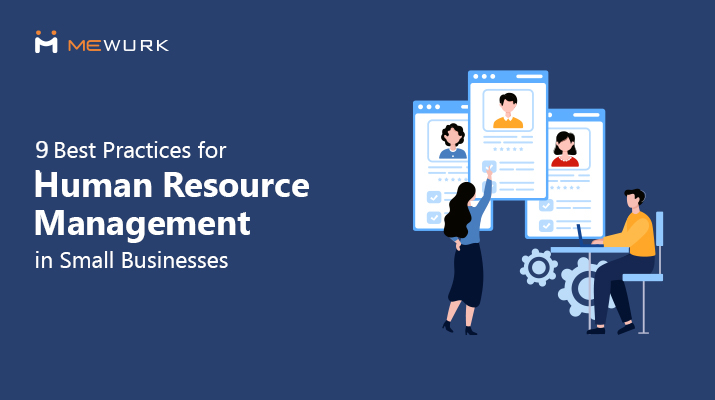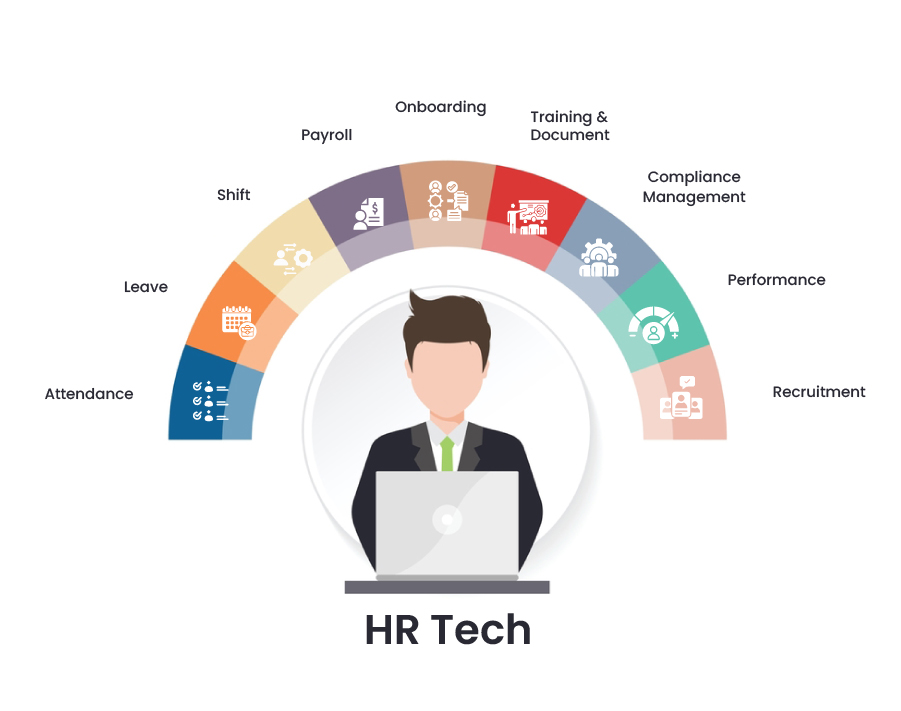
9 Best Practices for Human Resource Management in Small Businesses
When we think of successful small businesses, we often stop to praise their innovative products, excellent customer service, or strong leadership. But there’s one factor, which we overlook, that quietly powers their success and sustainable growth—human resource management.
Unlike large corporations with dedicated personnel to handle different human resource management functions, small businesses struggle with insufficient manpower. The sparse staff there are left with no choice but to handle all aspects of hiring, payroll, compliance, and employee engagement with limited resources.
Oftentimes, this leads to costly mistakes, high turnover, and operational challenges. How can small businesses overcome these excessive burdens while keeping their employees productive, motivated, and loyal?
In this blog, we’ll explore key practical and effective human resource management strategies tailored for small businesses. From helping you hire smarter, engage employees better, and create a thriving workplace, these insights will set you up for success. So, without further ado, let’s get into it!
Smart Hiring: Finding the Right People Without Wasting Time

Small organisations need to have the right people to handle important positions, whether those handling key operations or human resource management roles. It is not easy to find the right people, particularly since small organisations have lower annual turnover and less impressive employer profiles to attract candidates as compared to larger, more established brands.
They need refined hiring strategies in place to capture the attention of top talent. To address this talent acquisition challenge, here are some strategic approaches small organisations can implement:
- Define the role clearly with a well-crafted job description.
- Leverage multiple hiring channels like job boards, referrals, and social media.
- Use an employee management system to streamline recruitment.
- Conduct structured interviews to assess the best fit.
Strategic Onboarding: Setting Employees Up for Success
Once the employees are shortlisted, onboarding them is a critical task for small businesses. In large enterprises, there are more strategic approaches for onboarding and talent retention.
Whereas in smaller firms, due to the lack of such steps, it is estimated that only less than 40% of new hires continue to stay longer than a year. To combat this challenge, here are five practical onboarding tips for small businesses:
- Make the paperwork digital using employee management software.
- Assign a buddy for initial support and guidance.
- Introduce the company culture and team dynamics early.
- Set clear expectations and short-term goals.
- Gather feedback to improve onboarding processes.
Performance Management: Turning Feedback into Business Growth
Performance Management, when done effectively, transcends mere evaluation. It will act as a catalyst for genuine business growth. Small businesses need to establish clear performance goals to provide a roadmap for their employees.
These goals should define what their individual contributions need to be and how they align with company objectives. Whether it is giving constructive feedback or offering continuous improvement platforms, there needs to be a structured approach to that.
Here are a few things you can implement to maximise the impact of your performance management process:
- Establish SMART goals: Specific, Measurable, Achievable, Relevant, Time-bound.
- Provide consistent, real-time feedback, not just annual reviews.
- Encourage two-way communication and active listening during feedback sessions.
- Personalise recognition and rewards to individual employee preferences.
- Use a human resource management system to track performance and analyse data.
Keeping Employees Happy via Effective Human Resource Management: The Secret to Retention
Keeping employees happy is a strategic imperative for retention. Several studies highlight the strong connection between employee happiness and business profitability. Cultivating a positive workplace culture, where employees feel valued and respected, forms the bedrock of this happiness. Encouraging open communication, prioritising their work-life balance, and recognising them as whole individuals further strengthens this.
It is not always necessary to offer grand benefits. Even small perks like flexible work arrangements or remote options can boost engagement and ultimately result in their overall happiness. Research suggests that 77% of employees believe flexible work hours would make their job a lot easier and them happier. Small businesses can create a happier and more committed workforce by following these key strategies:
- Appreciate your team by celebrating their achievements, irrespective of big or small.
- Listen to your employees and make improvements in your human resource management strategy.
- Support growth through learning opportunities and career development.
- Encourage teamwork through activities that build strong relationships.
- Maintain transparency by communicating company decisions clearly and fairly.
Payroll & Compliance: Simplifying the Complexities
Payroll and compliance, often daunting for small businesses, are crucial for stability and growth. A competitive yet sustainable compensation structure attracts talent while understanding labour laws and ensuring compliance prevents costly errors.
Technology, such as human resource management system with payroll automation, plays a key role in simplifying payroll and benefits management. Not only do they save time, but they are tested tools for navigating these complexities more effectively than traditional methods. These are the fundamental things to consider for payroll and compliance.
- Automate payroll administration using advanced and reliable tech
- Stay up to date on labour laws to ensure payroll compliance
- Provide clear and detailed pay stubs to employees after every payroll
- Examine compliance practices from time to time to avoid risks
- Consult experts if you have a lack of clarity about any payroll standards
HR Tech: Automating Processes for Efficiency and Growth

Human resource management should be the least expensive component for small businesses, with the money saved strategically reinvested to expand business operations and scale further. By smartly incorporating today's technology, numerous workplace operations can be made more cost-effective and efficient.
A tech-savvy approach offers substantial benefits for small businesses, with a variety of human resource management systems specifically tailored to optimise their operational processes. Here’s how technology can make a difference:
- Automate routine tasks like attendance, leave, shift, and payroll to accelerate workflows.
- Minimise human errors in data management for greater accuracy and compliance.
- Utilise real-time insights from employee management software to enhance decision-making.
- Improve employee experience with intuitive and smart HR tools.
- Reduce operational costs by integrating advanced technology into daily processes.
Learning and Development: Investing in Skills for the Future
Take any organisation that has been successful in the long run, for instance, Google. One of the common things there is the degree of learning and development opportunities they provide. As for small businesses, these are important to keep the resilience of their people.
Employees need to adapt and grow to be able to contribute meaningfully and incrementally each year. These L&D strategies will help small businesses sustain a competitive edge and continuous growth.
- Creating personalised learning paths for employees
- Supporting continuous professional growth opportunities
- Aligning training programs with the company's strategic goals
- Using technology like employee management software to track skill development
- Encouraging cross-departmental knowledge sharing to create a more connected and knowledgeable workforce.
Learning and development initiatives need not be an expensive undertaking for which you need to shell out a separate budget. A practical approach involves simple methods like encouraging teams to:
- Keep acquiring knowledge from blogs, articles, and books
- Gain experience through hands-on practice
- Learn from peers through discussions and collaboration
- Engage in informal learning sessions over lunch
- Take part in webinars or conferences for knowledge expansion
Organisational Policies: Building a Fair Workplace
Effective human resource management practices in small businesses are often distinguished by how they establish clear expectations, promote transparency, protect employee rights, and create a consistent framework that supports both individual growth and collective organisational objectives.
This will not happen overnight but requires carefully formed policies that align with the mission, vision, and strategic objectives of the business. Here are some policy formation and implementation strategies for small business human resource management:
- Clearly define and communicate all workplace policies.
- Ensure policies alignment with anti-discrimination and equality laws.
- Establish transparent procedures for addressing employee grievances.
- Regularly review and update policies if regulations change or gaps emerge.
- Train managers to apply policies impartially and respectfully
Succession Planning in Human Resource Management: Preparing the Next Generation

We have seen several businesses that perform pretty well over a certain period and then start to underperform gradually. Why does that happen? Part of the reason could be because of a lack of succession planning. This is especially true in small enterprises where the entire process is relied heavily on a single person, and when that person expires or shifts focus to something else, the organisation starts to suffer.
Strategic succession planning is essential in organisations to identify and develop internal talents and thereby ensure uninterrupted continuity. By identifying high-potential employees within and encouraging them to stay by showing them clear career progression pathways, organisations can address emerging leadership gaps. This will work favourably for both parties - the employees themselves and the organisation.
To strengthen your human resource management strategies, consider these Succession Planning Approaches:
- Identify and nurture high-potential internal talent
- Create clear leadership development frameworks
- Map future organisational leadership requirements
- Develop mentorship and knowledge transfer programs
- Build flexible, adaptive talent management strategies
Key Takeaways
Small businesses face the biggest human resource management challenges due to their limited resources and expertise. But there are smarter ways to address them more cost-effectively than the often complex systems of larger businesses. The right application of the 8 best practices we discussed here, coupled with employee management software, can make a world of difference.
How are you going to improve human resource management within your small business? Let us know in the comments. Are you looking for an employee management system that addresses common HR headaches and simplifies your daily operations? Discover how Mewurk can help.
Most Popular Post

Why Accurate Attendance and Leave Management Matters for Business Growth?
Read More →Why Accurate Attendance and Leave Management Matters for Business Growth?
How To Leverage Attendance Data For Better Workforce Management?
Read More →How To Leverage Attendance Data For Better Workforce Management?




